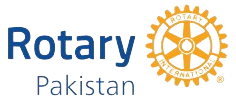In some ways it’s just like any other Rotary meeting.
Dozens of members of the Rotary Club of Köln am Rhein gather on a pleasant Monday evening at one of the famous Kranhäus office buildings, architectural gems shaped like upside down L’s over the Rhine River with the towers of Cologne Cathedral visible in the distance. The night’s speaker, an out-of-this-world member of the club, is scheduled to give the Rotarians a virtual tour of her workplace. The Wi-Fi connection on her end is finicky, and they wait eagerly.
At last, she appears, and that’s when this meeting takes a decidedly different turn. Because Samantha Cristoforetti, an astronaut aboard the International Space Station, is floating.
Cristoforetti is four months into her second stint on the space station, a research vessel about the size of a six-bedroom house that orbits the Earth every 90 minutes. Her hair set loose from the confines of gravity in a way that would make an ’80s metal rocker jealous, she takes questions and wows club members with the cosmic views. “Most of the time I try to take meetings from the cupola, because then you can show people the Earth from the windows,” she says in an interview with Rotary magazine.

Astronauts’ personal items are rigorously monitored; they must meet a strict weight limit of only 3.3 pounds total. Among her select few items, Cristoforetti has included the red-and-white banner of the Köln am Rhein Rotary club. As the meeting closes, her fellow club members thank her with thunderous applause.
She rolls backward away from the camera, leaving the club banner on screen floating behind her.
Cristoforetti’s journey to space began during her childhood in a tiny village in the Italian Alps, her taste for adventure whetted by summers spent roaming the woods with cousins and winters skiing. But it was her voyages in books, read in secret under the covers at bedtime, that primed her imagination for her meteoric rise. “I doubt I’d be an astronaut today if I hadn’t climbed a ladder to the Moon many years ago, … if I hadn’t traveled all the way to China with Marco Polo or fought epic battles beside Sandokan” the pirate, she recalls in her 2018 book, Diary of an Apprentice Astronaut.
When she was 17 and a senior in high school, she traveled to St. Paul, Minnesota, as an exchange student. “I was fascinated by space flight already. I was a big Star Trek fan,” she says. “All of that was centered in the United States.” One day, while eating out with her host mother, the two saw an advertisement for Space Camp in Huntsville, Alabama. Cristoforetti was all in. At Space Camp, she studied the space shuttle and simulated a 24-hour mission. “I got to go and play astronaut for the week,” she says. “It got me so much closer to the whole space thing.”
Step by step to outer space
When she returned home, she went on a second journey, that of acquiring the skills she’d need to apply to become an astronaut, should that rare opportunity present itself. She studied engineering and became one of the first female fighter pilots in the Italian Air Force. “I wouldn’t say I was obsessed,” she says. “I always took pleasure in learning and doing what I was doing at that time. But I always kept the dream in mind.”


Cristoforetti was fitted for a Russian spacesuit at the training center, where she also simulated a spacewalk underwater. Image credit: Gagarin Cosmonaut Training Center
The European Space Agency had recruited astronaut candidates only twice before, most recently in the early 1990s, when Cristoforetti was a teenager. So when the agency announced it was accepting applications in 2008, she knew that was her once-in-a-lifetime opportunity.
Along with 8,412 other qualified applicants, she toiled through the astronaut recruitment process, which included aptitude tests, psychological evaluations, medical exams, and interviews. She brushed up on her Russian language skills using a Harry Potter audio- book. (“I still have a small but enviable vocabulary of Russian magical terms,” she writes in her book.) Finally, she received the news she’d been waiting to hear — that she had fulfilled her childhood dream. “When you get that phone call that says you’ve been selected it’s like, Wow, what are the chances of this really happening?” she says.
In September 2009, she began training for missions to the International Space Station. For spacewalk training, she practiced underwater to simulate weightlessness. She was fitted for both Russian and American spacesuits; the American gloves alone required 26 measurements. And she prepared for emergencies that she hoped would never happen — just little workplace mishaps like becoming untethered from the space station and floating away.
It was during one of these trainings that Bernd Böttiger, a member of the Rotary Club of Köln am Rhein, first met Cristoforetti. Böttiger, an internationally renowned specialist in emergency medicine, teaches astronauts resuscitation procedures in case of an emergency on the space station. “She impressed me as being extremely positive, extremely tough, extremely straightforward, extremely focused,” he says. “I can easily imagine how they found her among the thousands of applicants.”
In November 2014, after what may have felt like light-years of training, Cristoforetti was ready to rocket to space.
Achieving liftoff
“Pusk,” comes the voice on the radio at the launchpad in Baikonur, Kazakhstan. Start. Fuel begins to flow into the combustion chambers of the Soyuz TMA-15M Russian spacecraft.
“Zazhiganiye.” Ignition.
“Poyekhali!” Let’s go! the crew’s commander, Anton Shkaplerov, shouts. Cristoforetti and crewmate Terry Virts join in his cry as they catapult into the air with a sudden jolt. It’s the same thing cosmonauts have been shouting since Yuri Gagarin, the first human in space, did so in April 1961.

